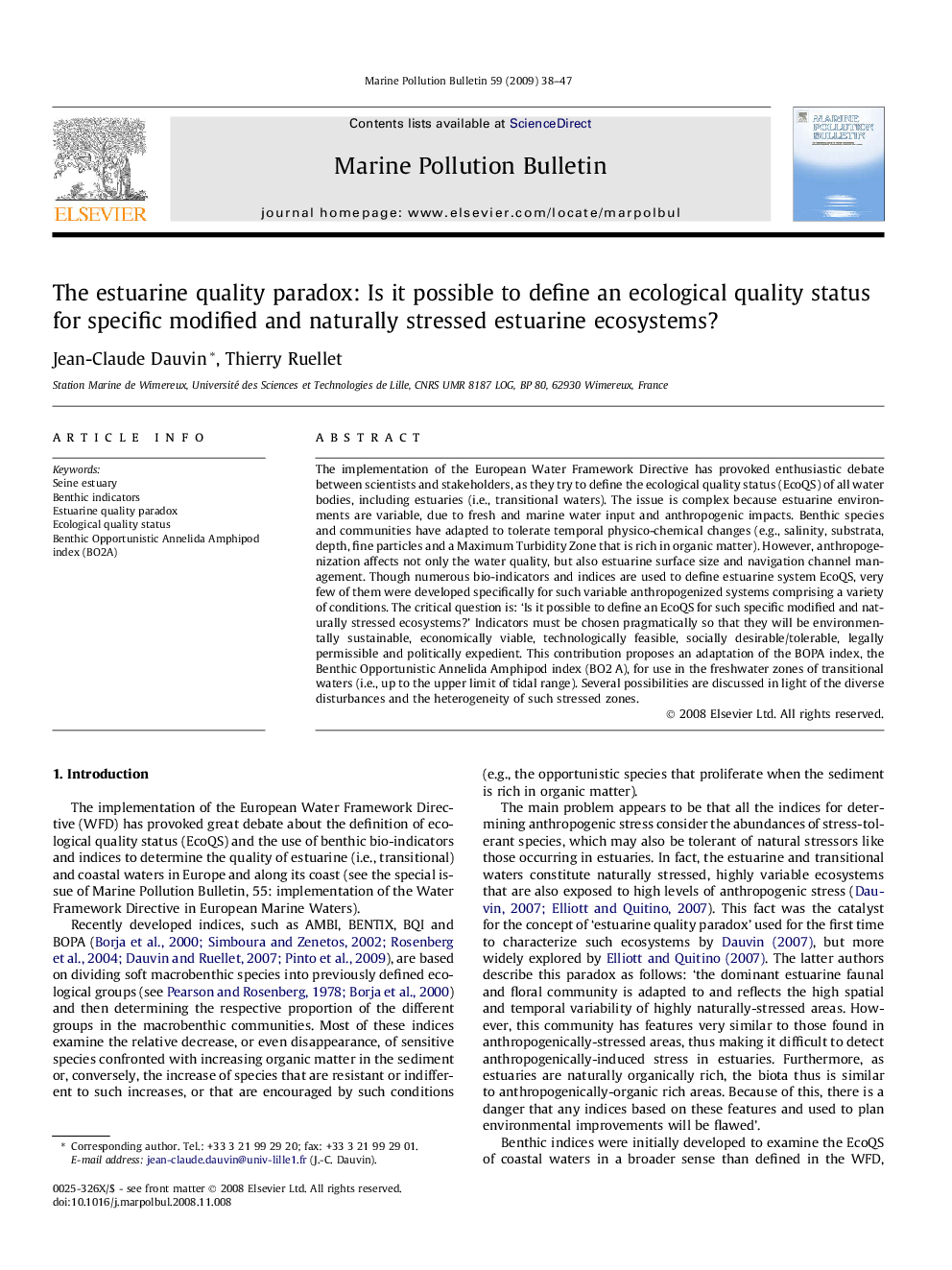| Article ID | Journal | Published Year | Pages | File Type |
|---|---|---|---|---|
| 4476863 | Marine Pollution Bulletin | 2009 | 10 Pages |
The implementation of the European Water Framework Directive has provoked enthusiastic debate between scientists and stakeholders, as they try to define the ecological quality status (EcoQS) of all water bodies, including estuaries (i.e., transitional waters). The issue is complex because estuarine environments are variable, due to fresh and marine water input and anthropogenic impacts. Benthic species and communities have adapted to tolerate temporal physico-chemical changes (e.g., salinity, substrata, depth, fine particles and a Maximum Turbidity Zone that is rich in organic matter). However, anthropogenization affects not only the water quality, but also estuarine surface size and navigation channel management. Though numerous bio-indicators and indices are used to define estuarine system EcoQS, very few of them were developed specifically for such variable anthropogenized systems comprising a variety of conditions. The critical question is: ‘Is it possible to define an EcoQS for such specific modified and naturally stressed ecosystems?’ Indicators must be chosen pragmatically so that they will be environmentally sustainable, economically viable, technologically feasible, socially desirable/tolerable, legally permissible and politically expedient. This contribution proposes an adaptation of the BOPA index, the Benthic Opportunistic Annelida Amphipod index (BO2 A), for use in the freshwater zones of transitional waters (i.e., up to the upper limit of tidal range). Several possibilities are discussed in light of the diverse disturbances and the heterogeneity of such stressed zones.
